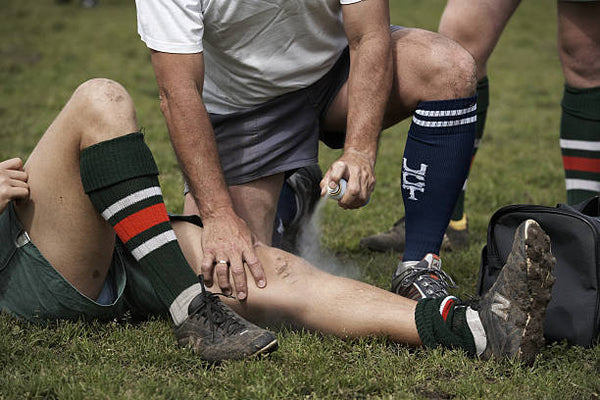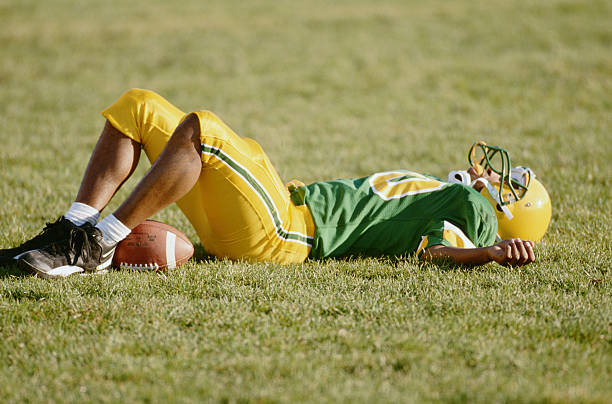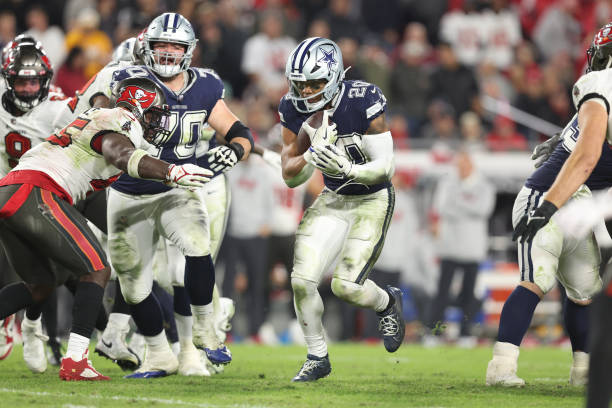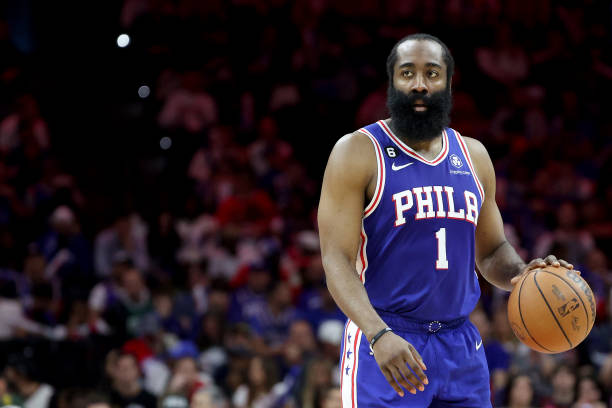In the high-impact world of professional football, injuries are an unfortunate reality. The National Football League (NFL) is no stranger to the physical toll that the sport takes on its players. From bone-crushing tackles to high-speed collisions, the risk of injury looms large on the gridiron. In this blog post, we will delve into the topic of injury concerns in the NFL, exploring the nature and impact of these injuries, common types and their causes, prevention measures, the consequences for players' careers, and compelling case studies that highlight the significance of these concerns. Whether you're a die-hard football fan or simply curious about the physical challenges faced by NFL athletes, this post will provide valuable insight into the world of NFL injuries. So, let's dive in and uncover the truth behind the physical toll of America's favorite sport.
Understanding the Nature and Impact of NFL Injuries

In order to fully grasp the significance of injury concerns in the NFL, it is crucial to understand the nature and impact of these injuries. NFL players endure a level of physicality that is unmatched in most other sports. The combination of high-speed collisions, intense physical contact, and repetitive motions puts their bodies at risk for a wide range of injuries.
The impact of NFL injuries extends beyond the field, affecting not only the players themselves but also their teams, fans, and the overall dynamics of the game. Let's delve deeper into this section to gain a comprehensive understanding.
Related: Tom Brady’s FTX Connection
The Physical Toll on NFL Players
NFL injuries can vary in severity, from minor sprains and strains to career-threatening conditions. The immense force exerted during gameplay can lead to fractures, dislocations, torn ligaments, and muscle strains. The physical toll of these injuries can result in acute pain, limited mobility, and long-term health implications.
The Financial Consequences
Injuries in the NFL can also have significant financial implications for both players and teams. Players who are sidelined due to injuries may miss out on game bonuses, endorsement deals, and potential career advancements. Additionally, teams may face financial setbacks as they invest in medical treatments, rehabilitation programs, and replacement players.
Related: 7 Easier Sports to Go Pro In: A Comprehensive Guide for Aspiring Athletes
The Impact on Team Performance
When key players are injured, it can have a profound impact on the performance and dynamics of the team. The absence of star players can affect the team's ability to execute game plans, diminish morale, and lead to a decline in overall performance. Injuries can disrupt team chemistry and force coaches to make strategic adjustments to compensate for the loss of talent.
The Emotional and Mental Strain
In addition to the physical challenges, NFL injuries can take a toll on players' emotional and mental well-being. The fear of reinjury, the pressure to return to the field quickly, and the frustration of being unable to contribute to the team can lead to anxiety, depression, and a host of other mental health issues. The emotional strain can further complicate the recovery process and impact overall player well-being.
Related: MLB 2023 World Series: Analyzing Odds and Top Bets for the Final Four Teams
The Public Perception and Fan Engagement
NFL injuries also influence the perception of the sport and fan engagement. When high-profile players are injured, it can generate media attention and public discourse around safety concerns in the NFL. Fans may become more cautious or critical of the sport, impacting attendance, television ratings, and overall interest in the game.
Understanding the nature and impact of NFL injuries is essential for all stakeholders, including players, teams, fans, and the league itself. By recognizing the physical, financial, emotional, and public implications, we can better appreciate the significance of injury concerns in the NFL and the need for proactive measures to protect players' well-being.
Common NFL Injuries and Their Causes

In the fast-paced and physically demanding world of the NFL, players are susceptible to a wide range of injuries. Understanding the common types of injuries and their underlying causes is crucial in addressing injury concerns in the league. In this section, we will explore some of the most prevalent NFL injuries and delve into the factors that contribute to their occurrence.
Related: The High Cost of Sports: Is the Fan Experience Worth the Price?
Knee Injuries
Knee injuries are among the most common and debilitating injuries in the NFL. They can range from minor sprains and strains to more severe conditions such as ACL (anterior cruciate ligament) tears and meniscus tears. The high-impact nature of the sport, sudden changes in direction, and collisions can lead to knee injuries. Additionally, playing on artificial turf or in adverse weather conditions can increase the risk of these injuries.
Concussions
Concussions have gained significant attention in recent years due to their potential long-term effects on player health. They occur when the brain experiences trauma from a blow to the head or a violent shaking of the body. Concussions can result in a wide range of symptoms, including headaches, dizziness, memory loss, and cognitive impairment. The high-speed collisions and tackles in the NFL make players particularly susceptible to concussions.
Related: A Deep Dive into Football, Fantasy, and Friendship
Shoulder Injuries
Shoulder injuries are prevalent in the NFL, with conditions such as dislocated shoulders, rotator cuff tears, and AC joint separations being common. These injuries can occur due to direct blows, collisions, or repetitive motions that place stress on the shoulder joint. Quarterbacks and wide receivers are especially vulnerable to shoulder injuries due to the throwing and catching motions involved in their positions.
Ankle Injuries
Ankle injuries, including sprains and fractures, are frequent in the NFL. They often occur when players make sudden changes in direction, land awkwardly, or get tackled in a way that puts stress on the ankle joint. Playing on uneven surfaces or in poor weather conditions can increase the risk of ankle injuries.
Related: NFL Week Insights: Betting on Division Underdogs and the Art of Prediction
Fractures
Fractures, such as broken bones in the arms, legs, and ribs, are also common in the NFL. These injuries can result from direct impacts, high-velocity collisions, or falls. Fractures can significantly impact a player's ability to continue playing, requiring extensive medical intervention and rehabilitation.
Understanding the common types of NFL injuries and their causes is essential for players, coaches, medical staff, and league officials. By identifying the factors that contribute to these injuries, proactive measures can be implemented to reduce their occurrence and severity. Through improved training techniques, equipment advancements, and rule changes, the NFL can strive to create a safer playing environment for its athletes.
Prevention Measures to Reduce NFL Injuries

In order to address the injury concerns in the NFL, it is crucial to implement effective prevention measures. By focusing on proactive strategies, the league can reduce the occurrence and severity of injuries, ensuring the long-term health and well-being of its players. In this section, we will explore various prevention measures that can be employed to mitigate NFL injuries.
Related: Insider Betting Tips: Why the Chargers Are the Smart Bet Against the Chiefs
Proper Conditioning and Training
One of the key prevention measures is ensuring that players are in optimal physical condition. This includes comprehensive strength and conditioning programs designed to improve muscular strength, endurance, and flexibility. By implementing tailored training regimens, players can develop the necessary physical attributes to withstand the demands of the sport and reduce the risk of injury.
Appropriate Equipment
The use of appropriate equipment is paramount in minimizing NFL injuries. This includes properly fitting helmets, shoulder pads, and protective gear that offer adequate shock absorption and impact resistance. Regular equipment inspections and updates, along with strict adherence to safety standards, are essential to ensure player protection on the field.
Related: The Emotional Rollercoaster of Sports Betting: A Chargers Fan Perspective
Rule Changes and Their Impact
The NFL has implemented several rule changes over the years with the aim of reducing injuries. These changes include modifications to tackling techniques, restrictions on helmet-to-helmet contact, and penalties for dangerous hits. By continuously evaluating and refining the rules of the game, the league can promote a safer playing environment and minimize the risk of serious injuries.
Medical Intervention and Care
Timely and effective medical intervention plays a crucial role in preventing and managing NFL injuries. This includes immediate on-field medical assessments, access to quality medical personnel, and comprehensive rehabilitation programs. By providing players with proper medical care, including physical therapy and sports medicine expertise, the NFL can facilitate a faster and more complete recovery process.
Related: The Art of Sports Gambling: A Deep Dive with Michael Benatar
Player Education and Safety Initiatives
Educating players about injury prevention techniques and promoting safety initiatives is essential. This can involve mandatory educational programs focused on proper tackling techniques, injury recognition, and reporting protocols. By raising awareness and empowering players to take an active role in their own safety, the NFL can foster a culture of injury prevention and player well-being.
By implementing these prevention measures, the NFL can significantly reduce the occurrence and severity of injuries. However, it is important to recognize that injuries are an inherent part of the sport, and complete prevention may not be possible. Nevertheless, by prioritizing player safety and taking proactive steps to minimize risk, the league can create a safer environment for its athletes and ensure the long-term sustainability of the sport.
The Impact of Injuries on NFL Players’ Career

Injuries in the NFL can have a profound impact on the careers of players. From affecting their performance on the field to influencing their longevity in the sport, the consequences of injuries extend far beyond the immediate physical toll. In this section, we will delve into the various ways in which injuries can shape the trajectory of an NFL player's career.
Related: The Masters' Champions Dinner: A Culinary Tradition with a Twist
Effect on Performance
Injuries can significantly hamper a player's performance on the field. Even after recovery, players may experience a decline in their physical abilities, such as speed, agility, or strength. The lingering effects of an injury can impact their ability to execute plays, compete at the highest level, and maintain their previous level of performance. This can lead to reduced playing time, decreased statistics, and potential loss of starting positions or future opportunities.
Effect on Longevity of Career
The occurrence of significant injuries can shorten a player's career in the NFL. The rehabilitation process and the time taken to regain peak performance may result in missed playing seasons or reduced playing time. Additionally, recurring or chronic injuries may force players into early retirement, as the long-term risks and consequences outweigh the benefits of continued play. Injuries can abruptly halt a promising career and leave players grappling with the uncertainty of their future in the league.
Related: Mike Tomlin's Coaching Prowess
Psychological Impact
Injuries can also have a significant psychological impact on NFL players. The frustration of being unable to contribute to the team, the fear of reinjury, and the pressure to perform at a high level can lead to anxiety, depression, and other mental health issues. The mental toll of injuries can affect players' confidence, motivation, and overall well-being, potentially impacting their ability to bounce back and reach their full potential.
Post-Retirement Health Issues
The long-term effects of NFL injuries can extend well beyond a player's active career. Some injuries may lead to chronic pain, joint degeneration, or other health complications that persist into retirement. Post-retirement health issues can impact a player's quality of life, mobility, and overall well-being. The physical toll of injuries sustained during their NFL career may require ongoing medical care and treatment, affecting their post-football life.
Understanding the impact of injuries on NFL players' careers highlights the need for comprehensive injury prevention and rehabilitation programs. By prioritizing player health and well-being, the league can support players in overcoming the challenges posed by injuries and help them navigate successful careers both on and off the field.



